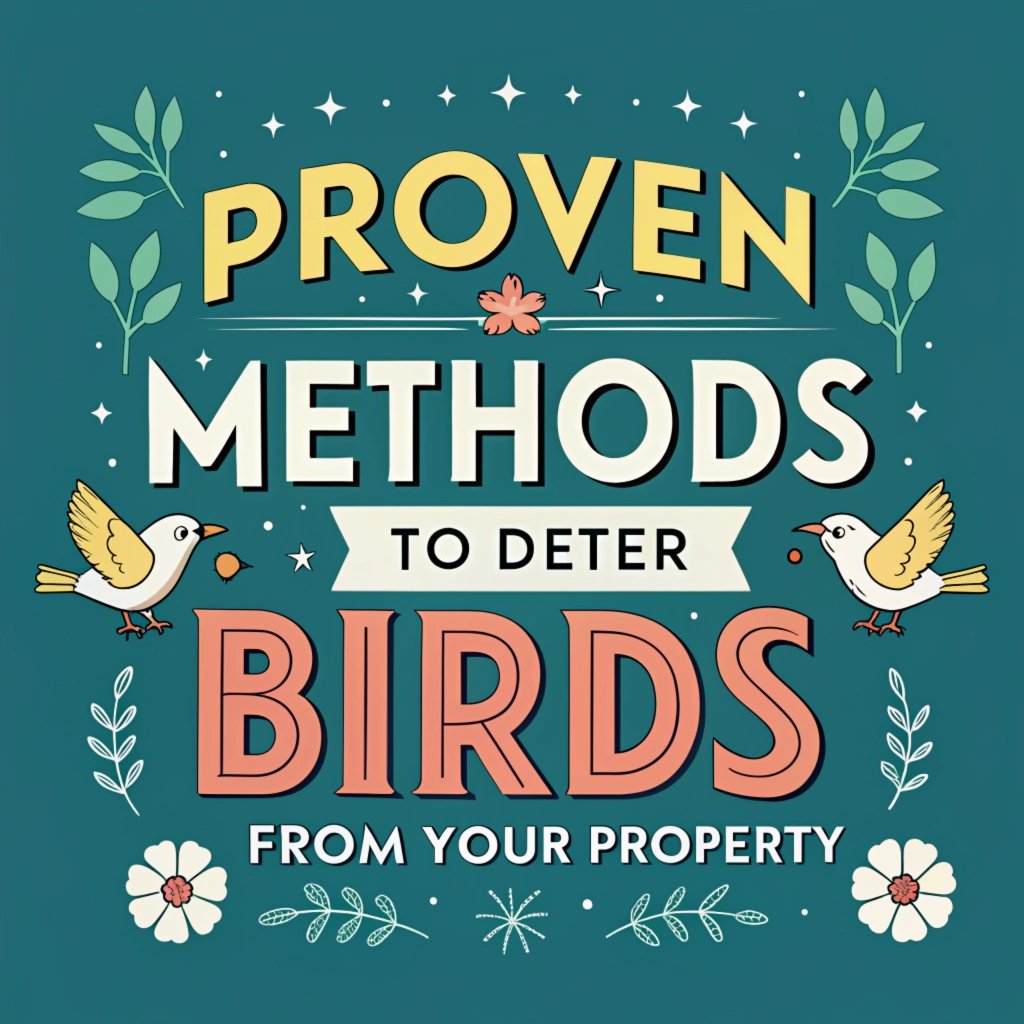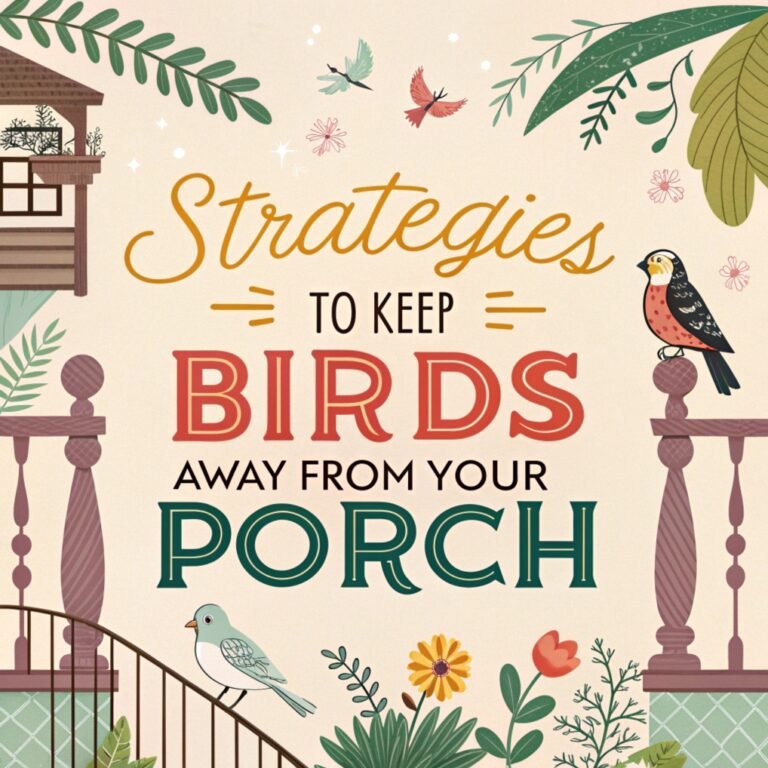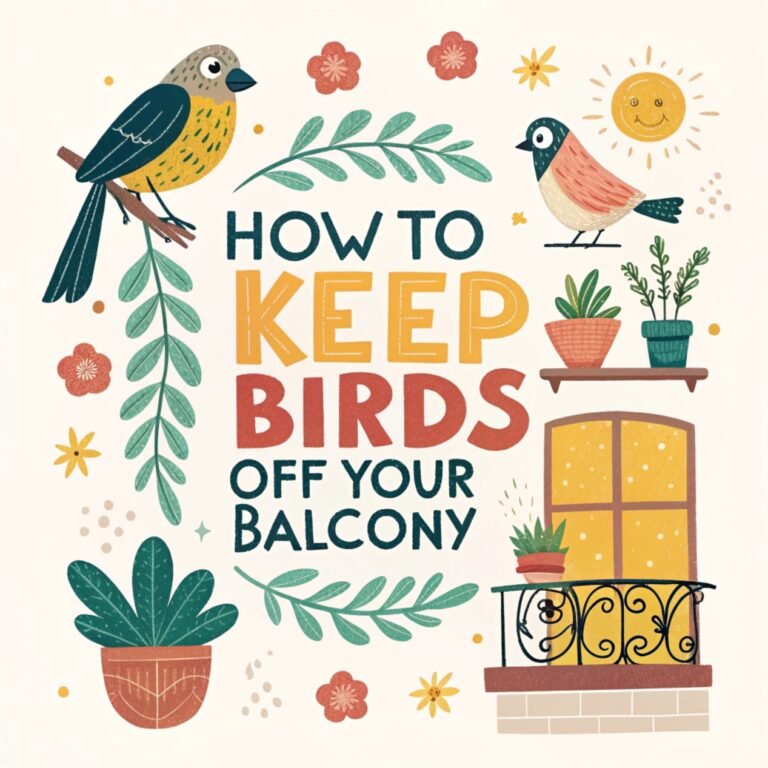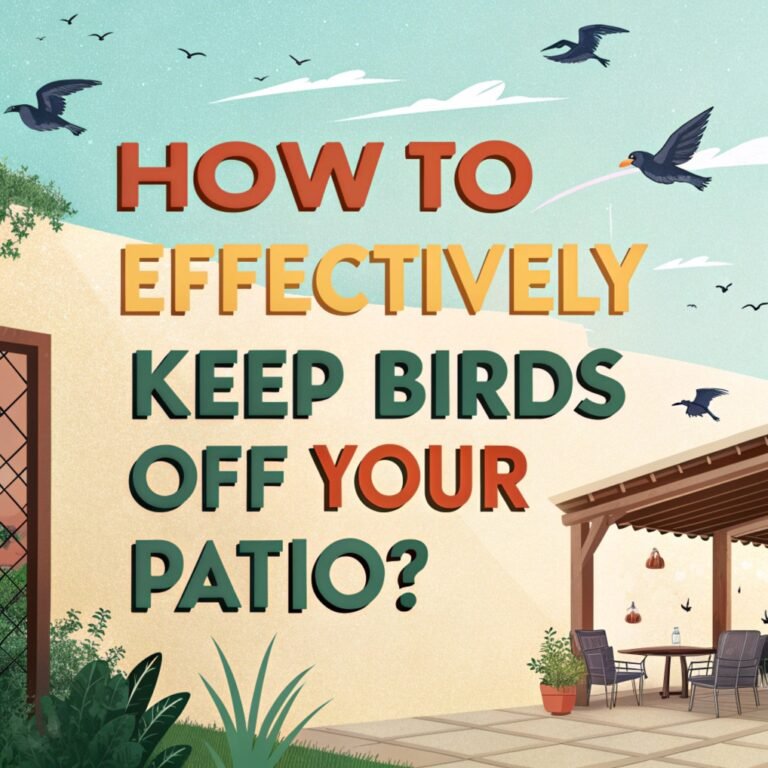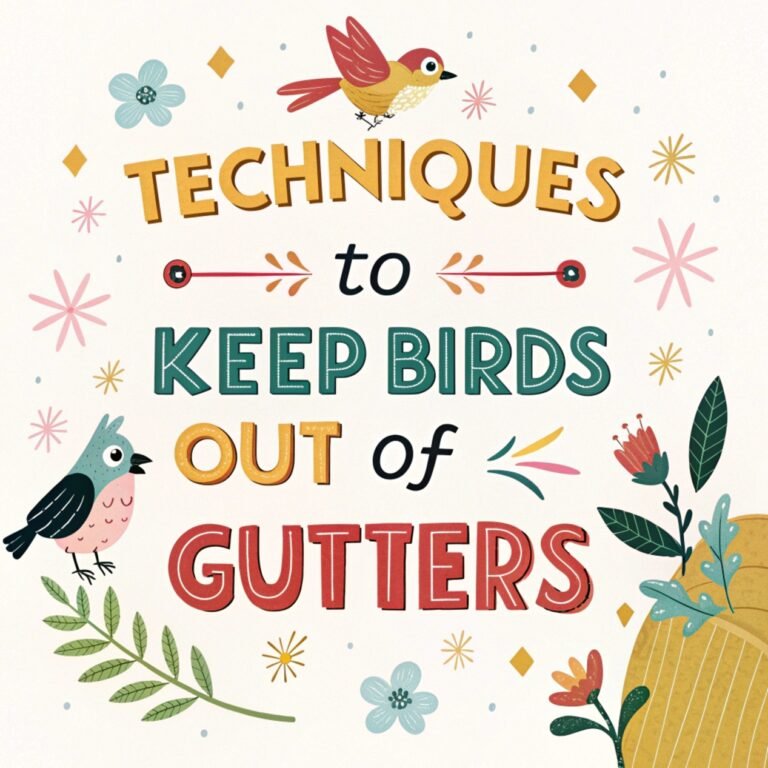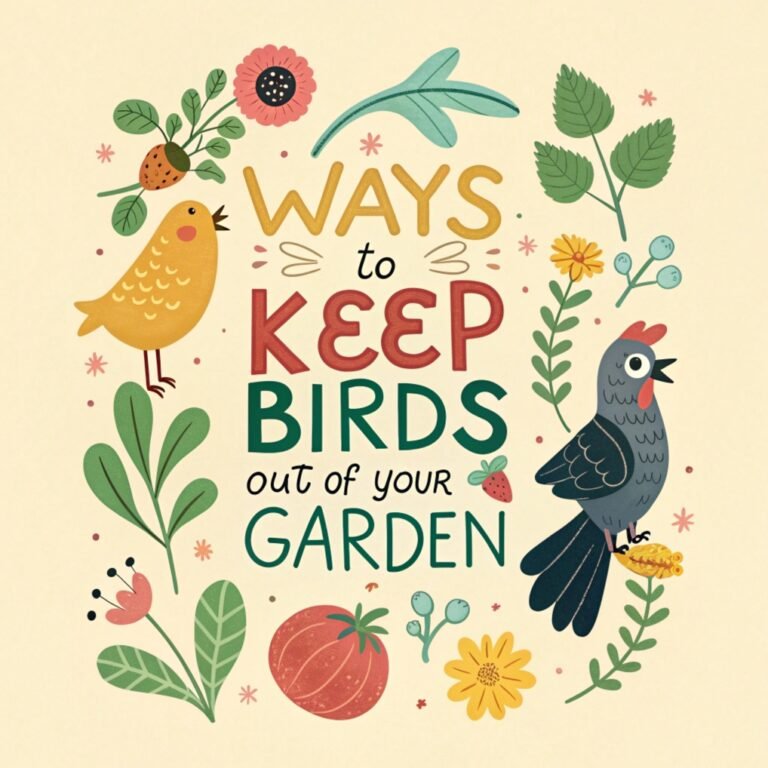Proven Methods to Deter Birds from Your Property: Effective Strategies
Deter Birds can be beautiful creatures, but when they become a nuisance on your property, it’s time to take action.
This comprehensive guide will explore various proven methods to deter birds from your home and garden, ensuring a peaceful and clean environment.
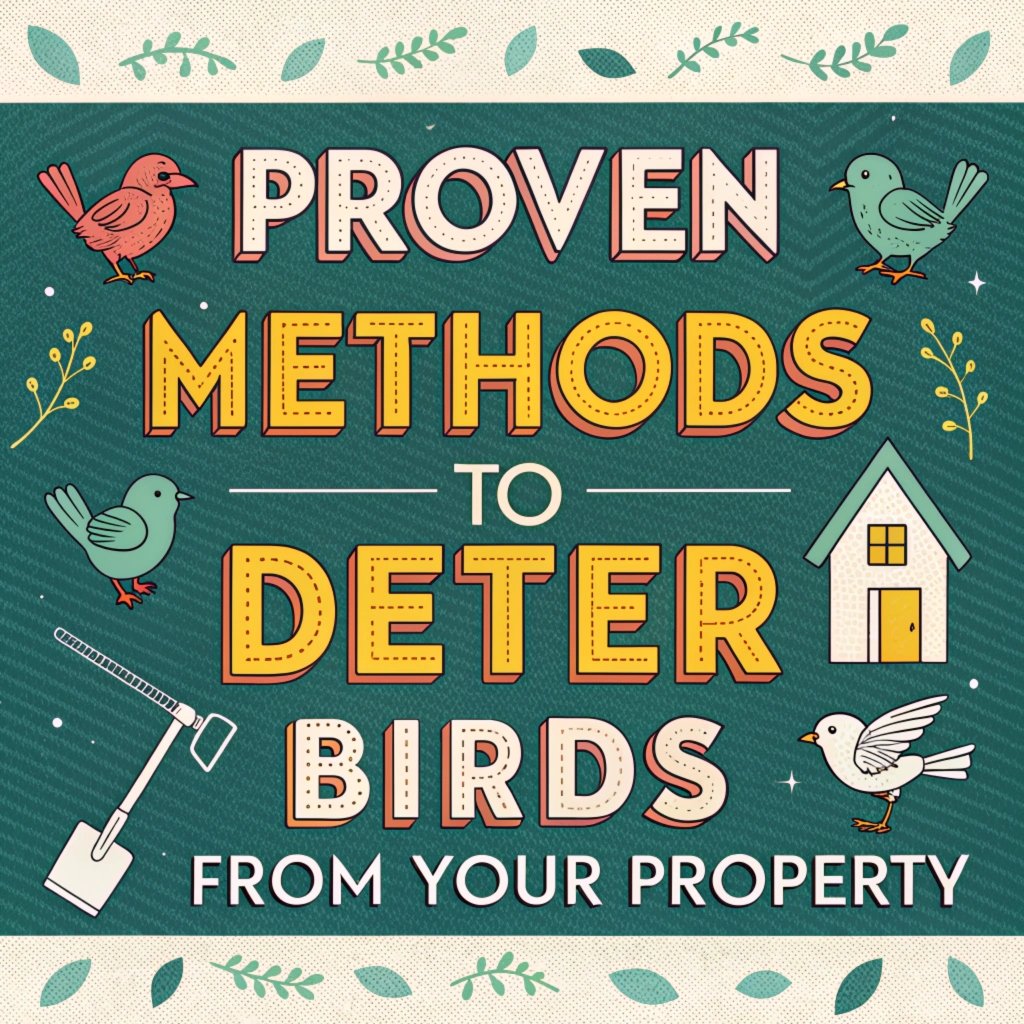
Key Takeaways:
- Understand bird attractants: Identify and remove food sources, water, and potential nesting spots on your property.
- Visual deterrents are effective: Use shiny objects like CDs, aluminum foil, or reflective garden balls to create visual disturbances.
- Scare tactics work: Employ predator decoys and scare eye balloons to tap into birds’ natural fear instincts.
- Physical barriers provide robust protection: Install bird netting and spikes to prevent birds from accessing specific areas.
- Sound-based solutions can be powerful: Utilize electronic bird repellers or ultrasonic devices to create an uncomfortable environment for birds.
- Taste aversion deters birds: Apply bird repellent sprays containing natural ingredients like chili pepper to make surfaces unpalatable.
- Landscape modifications matter: Remove standing water, cover compost piles, and trim trees to make your property less attractive to birds.
- Block entry points: Seal potential nesting areas and install chimney caps to prevent birds from entering your home.
- Consider professional services for persistent problems: Experts can provide targeted solutions and ongoing maintenance.
- Humane practices are crucial: Focus on prevention and deterrence rather than harmful removal methods.
- Maintain your strategy: Regularly inspect, clean, and rotate deterrents to ensure long-term effectiveness.
- Combine methods for best results: Use a variety of deterrent techniques to address different aspects of bird behavior.
- Be patient and consistent: Some methods may take time to show results, so maintain your efforts consistently.
- Stay informed about local regulations: Ensure your bird control methods are legal and ethical.
- Monitor and adjust: Regularly assess the effectiveness of your deterrent strategy and be prepared to make changes as needed.
Understanding the Need for Bird Deterrence
Birds can cause various problems for homeowners. They may damage property, create unsightly messes with their droppings, and even pose health risks.
Understanding why birds are attracted to your property is the first step in effectively deterring them. Birds often seek out areas that provide food, water, and shelter.
By identifying these attractants, you can develop a targeted approach to bird control.
Common bird attractants include open food sources, standing water, and comfortable nesting spots. Birds may be drawn to your property due to easily accessible garbage, bird feeders, or fruit-bearing trees.
They might also find your roof, gutters, or eaves appealing for nesting. By addressing these factors, you can make your property less inviting to avian visitors.
Visual Deterrents: Shiny Objects and Reflective Surfaces

One of the most effective and environmentally friendly ways to deter birds is by using visual deterrents. Birds are often startled by sudden flashes of light or reflections, making shiny objects an excellent choice for keeping them at bay.
You can create your own visual deterrents using everyday items or purchase specially designed products.
Old CDs, aluminum foil strips, or metallic balloons can be hung around areas where birds frequently gather.
These items generate flashes of light when illuminated by the sun or artificial light, creating visual disturbances that make the environment feel unstable and unfriendly for birds.
For a more decorative option, consider using reflective wind chimes or garden balls, which serve the dual purpose of deterring birds and enhancing your outdoor aesthetics.
Scare Tactics: Predator Decoys and Scare Balloons
Birds have natural predators, and you can use this to your advantage by employing scare tactics.
Placing decoys or statues of predatory birds, such as owls or hawks, around your property can create the illusion of danger for smaller birds.
These decoys work by tapping into birds’ instinctual fear of predators, discouraging them from nesting or lingering in the area.
Scare eye balloons are another effective tool in your bird deterrent arsenal. These balloons are designed with large, intimidating eyes that mimic those of predatory birds.
The combination of the balloon’s movement and the threatening eyes creates an environment that birds perceive as unsafe.
For best results, move these decoys and balloons around periodically to prevent birds from becoming accustomed to their presence.
Physical Barriers: Netting and Spikes
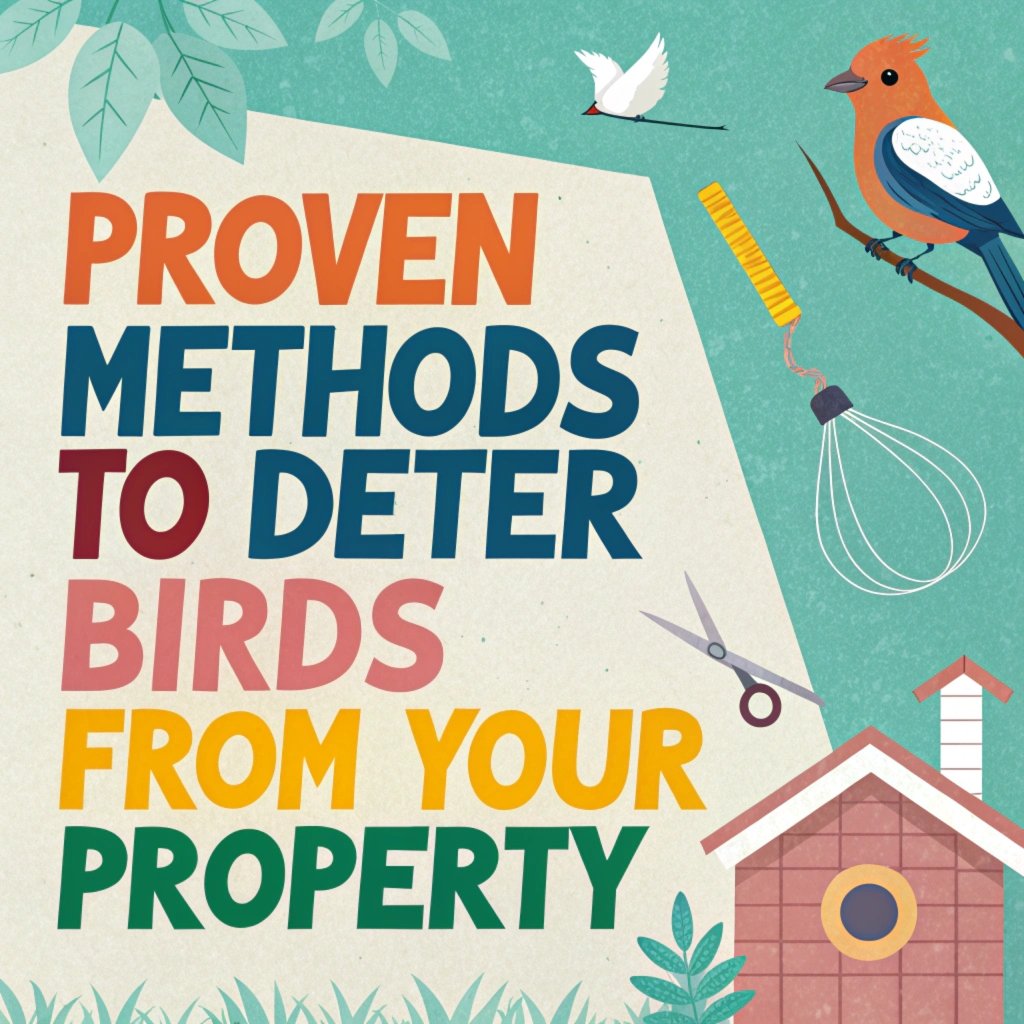
When visual deterrents aren’t enough, physical barriers can provide a more robust solution to keep birds away from specific areas. Bird netting is a highly effective method for excluding birds from gardens, balconies, or other open spaces.
This mesh-like material creates a physical barrier that prevents birds from accessing protected areas without causing them harm.
Bird spikes are another popular physical deterrent. These devices consist of long, needle-like rods that can be installed on ledges, window sills, and other surfaces where birds might perch or nest.
While the spikes look intimidating, they are designed to be uncomfortable rather than harmful, simply discouraging birds from landing.
When installing physical barriers, ensure they are securely fastened and cover all potential entry points to maximize their effectiveness.
Auditory Deterrents: Sound-Based Solutions
Birds can be sensitive to certain sounds, making auditory deterrents an effective method for keeping them away.
Electronic bird repellers emit predator calls or distress signals that make birds feel unsafe in the area.
These devices can be programmed to play at intervals, creating an unpredictable environment that birds will avoid.
Another sound-based solution is the use of ultrasonic devices. These emit high-frequency sounds that are unpleasant to birds but generally inaudible to humans.
While effective, it’s important to note that ultrasonic deterrents may also affect pets, so consider your household’s needs before implementing this method.
For a more natural approach, wind chimes can serve as both a decorative element and a subtle auditory deterrent.
Taste Aversion: Bird Repellent Sprays
Bird repellent sprays work by making surfaces unpalatable to birds, discouraging them from perching or nesting in treated areas.
These sprays often contain natural ingredients like chili pepper or grape extract, which birds find distasteful. You can create a homemade repellent spray using a mixture of water, vinegar, and chili powder.
When applying repellent sprays, focus on areas where birds frequently land or nest. Reapply the spray regularly, especially after rain, to maintain its effectiveness.
While these sprays are generally safe for use around humans and pets, always read and follow the instructions carefully, particularly if using commercial products.
Landscape Modifications: Creating an Unwelcoming Environment
Modifying your landscape can make your property less attractive to birds. Remove or cover potential food sources, such as open compost piles or unsecured garbage bins.
If you have fruit trees, consider netting them during the fruiting season to prevent birds from feeding on the produce.
Eliminate standing water sources, as these attract birds for drinking and bathing. Keep your gutters clean and ensure proper drainage around your property.
Trim trees and shrubs near your home to reduce potential nesting sites. By making these changes, you create an environment that is less hospitable to birds, encouraging them to seek resources elsewhere.
Blocking Entry Points: Sealing Potential Nesting Areas
Birds often seek out small openings and crevices for nesting. Inspect your home for potential entry points and seal them off.
Pay particular attention to areas under eaves, around vents, and in damaged siding. Use materials like wire mesh, wood, or specialized sealants to close these openings.
For larger openings like chimneys, install a chimney cap to prevent birds from entering. Check your roof regularly for damaged or missing shingles that might provide access to your attic.
By eliminating these potential nesting sites, you significantly reduce the likelihood of birds taking up residence in or on your home.
Professional Bird Control Services
If DIY methods prove insufficient, consider enlisting the help of professional bird control services. These experts can assess your specific situation and implement targeted solutions.
They may use a combination of the methods mentioned above, as well as more specialized techniques like bird birth control for population management in larger areas.
Professional services can also provide ongoing maintenance and monitoring to ensure long-term effectiveness.
While this option may be more costly upfront, it can save time and frustration in the long run, especially for persistent or large-scale bird problems.
Humane Considerations in Bird Deterrence
When implementing bird deterrent methods, it’s crucial to consider humane practices. Many bird species are protected by law, making it illegal to harm them or disturb active nests.
Focus on prevention and deterrence rather than removal or destruction. If you encounter an active nest, consult with local wildlife authorities for guidance on how to proceed legally and ethically.
Choose deterrent methods that do not cause physical harm to birds. Avoid sticky substances or traps that could injure birds.
Instead, opt for methods that make your property unappealing or inaccessible to birds without putting them at risk. By taking a humane approach, you can effectively manage bird problems while respecting wildlife.
Maintaining Your Bird Deterrent Strategy
Effective bird control requires ongoing effort and maintenance. Regularly inspect and clean your deterrent devices to ensure they remain effective.
Rotate or reposition visual deterrents periodically to prevent birds from becoming accustomed to them. Reapply repellent sprays as needed, especially after rain or heavy dew.
Monitor your property for signs of bird activity and adjust your strategy as necessary. Be prepared to try different combinations of deterrent methods, as birds can be adaptable and may become accustomed to a single approach over time.
By staying vigilant and flexible in your bird control efforts, you can maintain a bird-free property in the long term.
FAQs
How long does it take for bird deterrents to work?
The effectiveness of bird deterrents can vary depending on the method used and the persistence of the birds. Some visual deterrents may show results immediately, while others might take a few days or weeks for birds to fully respond. Consistency is key – maintain your deterrent methods and be patient for the best results.
Are bird spikes cruel to birds?
No, bird spikes are not cruel when properly installed. They are designed to be uncomfortable for birds to land on, not to harm them. Birds simply avoid the spikes and find alternative perching spots.
Can I use mothballs to deter birds?
While mothballs have been used as a deterrent, they are not recommended. Mothballs contain chemicals that can be harmful to birds, pets, and humans if inhaled or ingested. Stick to safer, more effective methods of bird control.
How often should I move my predator decoys?
To prevent birds from becoming accustomed to predator decoys, move them every few days. Changing their position and orientation helps maintain their effectiveness as a deterrent.
Is it legal to remove bird nests?
The legality of removing bird nests depends on the species and whether the nest is active. Many bird species are protected by law, making it illegal to disturb or remove active nests. Always consult local wildlife authorities before attempting to remove a nest.
Can ultrasonic bird repellers affect my pets?
Some ultrasonic bird repellers may be audible and potentially distressing to pets, particularly dogs. If you have pets, consider alternative deterrent methods or consult with a veterinarian before using ultrasonic devices.
How do I keep birds off my balcony without harming them?
Use a combination of visual deterrents like reflective tape or wind chimes, physical barriers like netting, and regular cleaning to remove any food sources. These methods effectively discourage birds without causing harm.
Are there any plants that naturally repel birds?
While no plants completely repel birds, some strong-smelling herbs like rosemary, mint, and lavender may deter them. However, these should be used in combination with other deterrent methods for best results.
How can I bird-proof my fruit trees?
Netting is the most effective way to protect fruit trees from birds. Cover the entire tree with fine-mesh netting before the fruit ripens, ensuring there are no gaps for birds to enter.
What should I do if I find an injured bird on my property?
If you find an injured bird, contact a local wildlife rehabilitation center or veterinarian for guidance. Do not attempt to care for the bird yourself, as this may be illegal and potentially harmful to the bird.

Hello, I’m Amelia White, the founder of birdsfanatic.com. As a lifelong bird enthusiast and spiritual seeker, I’ve always been fascinated by the mystical connections between birds and the human experience. On this site, I share my knowledge and insights into the symbolic meanings and spiritual significance of various bird species, exploring their roles in mythology, folklore, and cultural traditions. Join me on this journey into the world of birds, where we’ll discover the hidden wisdom and guidance that these magnificent creatures have to offer.

